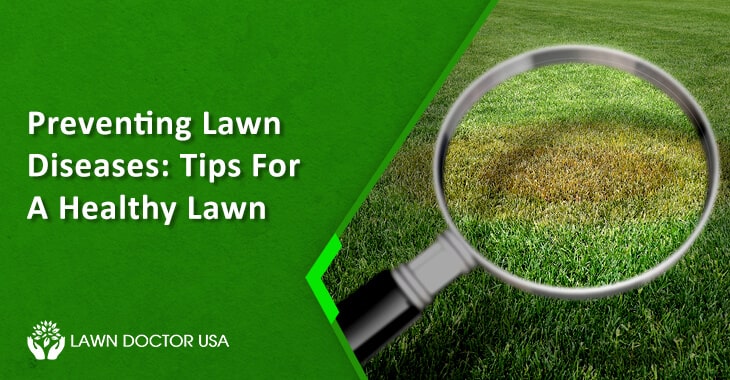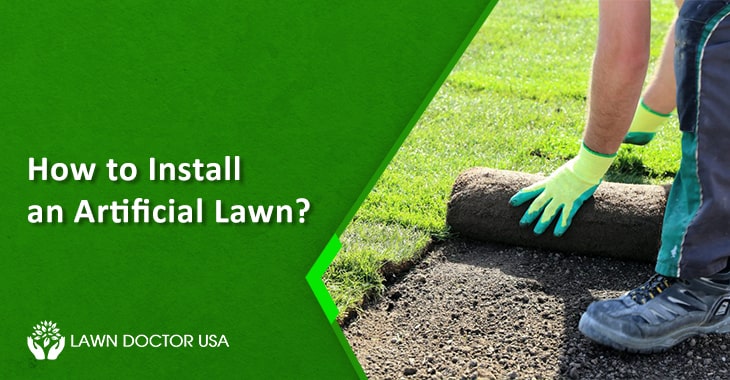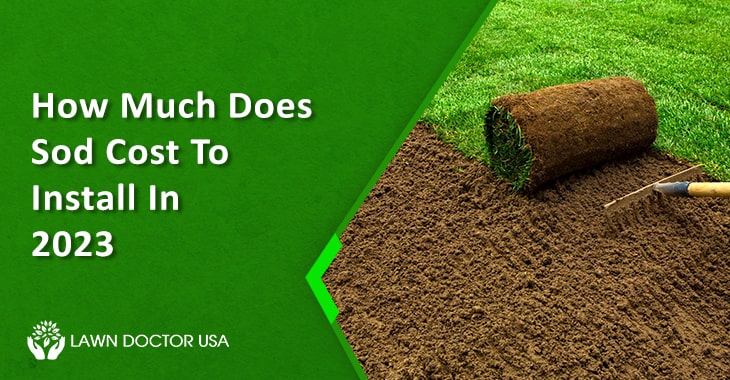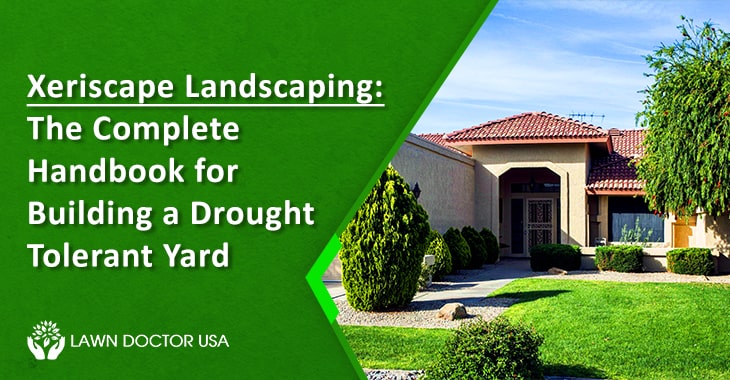
Use These Proactive Tips For Lawn Disease Control
Lawn diseases leave detrimental effects on the lawn and damage its health severely, leading to early death and decay. Common lawn diseases like brown patches, red thread, dollar spot, and rust, impact the lawn’s fertility and rob its productivity. Many factors, including fungus growth, poor drainage, excessive water, weed growth, and pest attack may contribute to the growth of these diseases. That is why it is important to follow maintenance practices for lawn disease control.
However, knowing what practice to use for eliminating a particular lawn disease is hard to understand for an amateur gardener. To help you, our Lawn Doctor USA experts have conducted extensive research and shared their knowledge. In this blog, we will discuss the issue in length and teach you more about lawn disease prevention.
What Are Lawn Diseases?
Lawn diseases are types of pathogens, fungus, bacteria, or virus that infects turfgrass, pushing the development of brown patches, yellow grass, brown spots, etc. They develop after receiving an ideal environment. Factors like poor soil quality, pest infestation, an overabundance of moisture & humidity, excess irrigation, and adverse weather multiply their growth.
Most Common Symptoms Of Lawn Diseases
It is significant to identify a lawn disease before providing any treatment or following any practice. Here are some signs of lawn disease identification.
- Grass wilting
- Discoloration
- Dead spots
- Brown spots
- Grass yellowing
- Red, brown, and black patches
- Grass thinning
- Presence of unusual insects or animals
- Weed growth
- Fungus growth
- Poor growth
- Low productivity
If you notice these symptoms developing on your lawn, investigate further and identify the problem. Lawn diseases spread quickly and make elimination harder. So take steps to repel their impact before they become severe.
Powerful Tips For Lawn Disease Control
1. Eliminate The Thatch Buildup
The thatch layer is a mixture of living and dead plant matter sitting in the grass base on the stem and soil meeting point. The layer hinders grass growth and nutrient consumption. It is necessary to aerate the soil to eliminate thatch buildup and soil compaction. Through soil aeration, you can channel the new growth, penetration of water, and soil amendments. It helps plants accept nutrients, sunlight, and water in the required quantity.
2. Use Nitrogen Fertilizers In Adequate Quantity
Apply Nitrogen infused fertilizers that also have Phosphorus and Potassium in balanced amounts. Avoid crossing the limit of Nitrogen application. For ideal growth, apply 4 to 6 pounds of Nitrogen on a 1000 square feet area. Refrain from over-application and annual application in adequate quantity is more than enough.
3. Mow The Lawn Regularly
Follow a proper lawn mowing routine for lawn disease control. Lawn mowing helps cut dead grass and other decaying parts and remove weeds, bacteria, fungi, and pathogens. Mow the lawn with a sharp blade mower until the grass is 3 inches long. Refrain from crossing 3 inches grass length limit because small grass is more susceptible to disease and infestation.
4. Avoid Burying Large Organic Debris
Clean your lawn from time to time using a lawn rake. Remove debris and dead grass clippings from the yard. Do not bury large organic debris in the soil, and avoid using dead grass clippings as fertilizers. Both components will invite pests and bacteria that may infect the yard with more diseases.
5. Irrigate The Lawn On The Right Time
It is significant to follow safe lawn watering practices and hydrate the water at the suggested time. Water your lawn in the morning before sunrise and let the sunlight soak the water. This way, soil can absorb both components properly. Water your lawn twice in the spring, 3 times a day in summer, and once a week in the winter season. You can adjust the schedule on rainy days according to soil conditions.
6. Seek Professional Help
Lawn disease treatment and control are hard to keep in check for amateur gardeners. You must consult lawn care specialists if you suspect a disease outbreak in your lawn. Professionals will treat it at an early stage and prevent further damage.
Hire Lawn Doctor USA To Handle Dire Situations Related To Lawn Disease Spread
Lawn Doctor USA has an in-house lawn care specialist team. Our team is well-versed in lawn disease control techniques and treatment methods required to stop the outbreak. Our experts will repel the damage your lawn has suffered and use various techniques to promote new growth. We help deal with hazardous situations, eliminate disease, and make the yard healthy.
Conclusion
You have to act on time to stop the lawn disease growth. Otherwise, they may damage the grass and other plants, leading to the development of discolored grass patches and other issues. The impact is hard to reverse and takes more effort than a prevention routine. It is better to act and stop the growth with proactive lawn maintenance practices. Reach out to us to know more about lawn care services.




